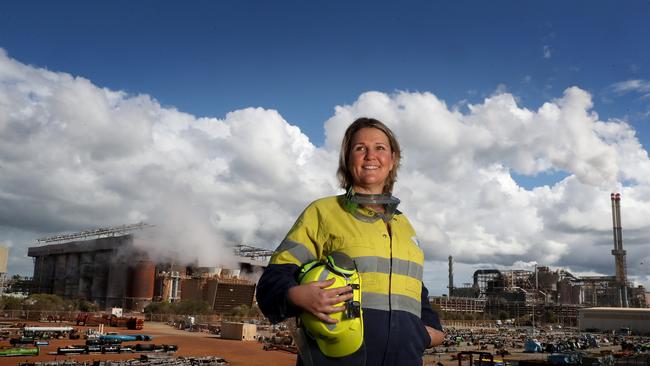Alcoa’s carbon cutting gets federal government help
Canberra will chip in 40 per cent of the cost of a technology trial that could strip 70 per cent of the carbon emissions from Alcoa’s WA alumina operation.

The federal government will chip in 40 per cent of the cost of a technology trial that could strip 70 per cent of the carbon emissions from Alcoa’s WA alumina refining operations, as the aluminium major looks to slash its carbon footprint.
Alcoa said on Thursday it will launch a $28.2m trial of mechanical vapour compression at its Wagerup plant in WA, the first step to reducing its reliance on gas-fired power generation at its massive alumina operations in the state.
Alcoa’s gas fired plants make its operations far less carbon intensive than those of rival WA producer South32, which relies on coal-fired plants to power its own refinery.
But its operations still produce about half a tonne of carbon dioxide equivalent for each tonne of alumina produced, according to calculations by industry news service BoilingCold, and Alcoa has long said it wants to cement its claims to be the world’s cleanest alumina and aluminium producer by further reducing its carbon footprint.
But moving from thermal generation to renewable energy is a difficult one for alumina refineries, which use the steam produced in gas and coal-fired power plants as part of their own industrial process.
On Thursday night, however, Alcoa announced it will begin a trial to use renewable energy to power MVR systems – technology used to recycle waste heat – at its plants, in the hope it can use the system to replace the steam provided by nearby gas plants.
The initial trial will cost about $28.2m, with $11.3m to come from the federal government’s Australian Renewable Energy Agency.
Energy and Emissions Reduction Minister Angus Taylor said the trial had the potential to significantly reduce emissions across the multi-billion alumina industry in Australia.
“This technology has the potential to be a game-changer for the industry and could reduce total domestic emissions by up to 1.5 per cent in future,” he said.
“Through projects like this, we are reducing emissions by investing in technology, not taxes. Innovation, not elimination, is the key here.”
If initial feasibility studies are successful, Alcoa says it will look to install a larger module at its Wagerup refinery by 2023 to test the technology at scale.
Alcoa’s three refineries emitted about 4.7 million tonnes of carbon dioxide equivalent in the 2019 to 2020 financial year, according to data sourced from the government’s Clean Energy Regulator.
If the MDR technology is successfully applied to its WA operations, 3.9 million tonnes could be slashed from that total.


To join the conversation, please log in. Don't have an account? Register
Join the conversation, you are commenting as Logout